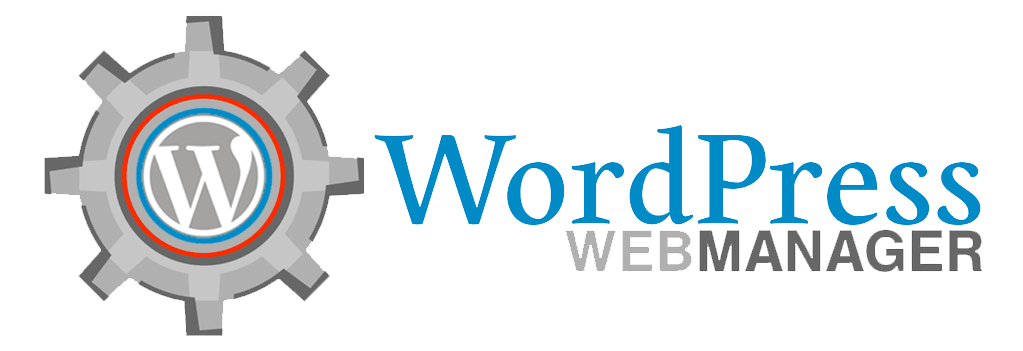Our Essential WordPress Maintenance and Hosting Service includes:
Essential Maintenance and SEO Services $650/Month
-
- Requires 6 month Agreement
- Hosting and Maintenance Services included ($80/Month value)
- SSL Services included ($100/year value)
- Existing Website Audit/SEO Strategy Development
- Connect to Google Search Console
- Connect to Google Analytics
- Monthly Analysis and Reporting
- Develop targeted content from our Analysis to create 1 “SEO Friendly” 750 word content article with featured image per month related to your service offering
- On-Page Technical SEO (H1, H2, H3, Linking, Follow, No-Follow, Anchor Text –1 page per month)
Advanced Maintenance and SEO Services $900/Month
- Requires 6-12 month Agreement
- Hosting and Maintenance Services included ($80/Month value)
- SSL Services included ($100/year value)
- Existing Website Audit/SEO Strategy Development
- Create or Connect to Google Search Console
- Create or Connect to Google Analytics
- Identify and Monitor 10 Keywords to target your best performing organic content
- Identify Top-3 Competitors and monitor position tracking and keyword gaps
- Monthly Keyword Analysis and Reporting
- Develop targeted content from our Analysis and create 2 “SEO Friendly” 750 word content articles with featured image per month related to your service offering
- On-Page Technical SEO (H1, H2, H3, Linking, Follow, No-Follow, Anchor Text –2 pages per month)
Enterprise Maintenance and SEO Services Starting at $1,500/Month
-
- Requires 12 month Agreement
- Hosting and Maintenance Services included ($80/Month value)
- Dedicated SEO Professional
- Create or Connect to Google Search Console
- Create or Connect to Google Analytics
- Identify and Monitor 20 Keywords to target your best performing organic content
- Identify Top-3 Competitors and monitor position tracking and keyword gaps
- Monthly Keyword Analysis and Reporting
- Develop targeted content from our Analysis and create 4 “SEO Friendly” 750 word content articles with featured image per month related to your service offering
- Create linking opportunities (internal/external linking)
- On-Page Technical SEO (H1, H2, H3, Linking, Follow, No-Follow, Anchor Text, etc. –4 pages per month)
Hosting Maintenance Services $120/Month (Free SSL)
Included Hosting Specifications (High traffic websites will require custom performance allocations)
- 400,000 monthly visits
- 50GB storage
- 500GB bandwidth
- SSL is included if Hosted on Our Servers (httpS://yourdomain.com an average of $80/year in savings).
- Daily Website Backups
- WordPress Platform Updates
- WordPress Plugin/Software Updates
- Website Performance, and Up-time Management
- Security Monitoring
- Database Optimization
Read More about WPWebManager Website Maintenance Services
- Keyword research: Identifying the keywords and phrases that potential customers use when searching for products or services related to your business.
- Connect Google Search Console
- Connect Google Analytics and Set Conversion Goals
- On-page optimization: Ensuring that your website is optimized for search engines by using the right keywords in the right places, such as in page titles, headings, and meta descriptions.
- Content creation: Developing high-quality, keyword-rich content that is optimized for search engines and provides value to your website visitors.
- Link building: Acquiring links from other high-quality, relevant websites that point back to your website. This helps to improve your website’s visibility and search engine rankings.
- Technical SEO: Improving your website’s technical aspects, such as site structure, site speed, and mobile responsiveness, to ensure that it is accessible and easily crawled by search engines.
- Local SEO: Optimizing your website for local search by including accurate and consistent business information, such as your business name, address, and phone number, on your website and in online directories.
These are just a few of the basic services that are typically offered by SEO providers. The specific services that you require will depend on the specific needs of your business and website.

Maximize Your Website’s Performance with Professional WordPress Maintenance Services
Are you a business owner using WordPress to power your website? Have you ever wondered why regular maintenance is essential to keep your site running smoothly? Look no further, because we have the answers you need! In this comprehensive content plan, we will dive into the world of WordPress Maintenance Services and explore their importance for businesses just like yours.
WordPress Maintenance Service refers to the ongoing support and optimization provided to ensure your website operates flawlessly. It involves regular updates, security checks, backups, and performance enhancements. Investing in maintenance services is crucial for businesses as it guarantees high functionality, security, and an exceptional user experience.
By enlisting the help of a professional maintenance service for your WordPress website, you can unlock a myriad of benefits. Firstly, you can save valuable time and effort, as experts handle all technical aspects, allowing you to focus on running your business. Additionally, by keeping your website up-to-date, you protect it from security breaches and potential data loss, ensuring a trustworthy online presence for your customers.
In this content plan, we will cover various key topics related to WordPress Maintenance Service, including the importance of software updates, the impact of website loading speed on user engagement, effective security measures, and much more. By the end of this journey, you will fully understand the value of professional maintenance services and be equipped to make an informed decision for your website’s future.
So, buckle up and get ready to elevate your website’s performance with top-notch WordPress Maintenance Services. Your online success starts here!
Site Speed Improvement: Enhancing User Experience and SEO
Site speed is a critical factor in determining the success of your WordPress website. It directly impacts both user experience and search engine rankings. A slow-loading site can frustrate visitors and lead to high bounce rates, while fast-loading sites are more likely to engage users and keep them on your website for longer.
When it comes to search engine optimization (SEO), site speed plays a significant role in determining how well your website ranks in search engine results pages (SERPs). Search engines like Google prioritize websites that load quickly because they want to provide the best possible user experience to their users.
To improve the speed of your WordPress site, consider implementing the following strategies:
1. Optimize Images:
Large image files can significantly slow down your website’s loading speed. Use image optimization tools or plugins to compress and resize images without compromising on quality. This will reduce the file size and improve your site’s overall performance.
2. Utilize Caching:
Caching allows your website to store temporary versions of pages, reducing the need to generate each page from scratch every time a user visits. Utilize caching plugins like WP Rocket or W3 Total Cache to speed up loading times for returning visitors.
3. Minify CSS and JavaScript:
Minifying your CSS and JavaScript files involves removing unnecessary characters, comments, and white spaces. This reduces file size and helps your website load faster. Consider using minification plugins like Autoptimize or WP Fastest Cache to streamline your website’s code.
4. Enable Gzip Compression:
Gzip compression allows your website’s files to be compressed and sent to the user’s browser more efficiently. Enabling Gzip compression can significantly reduce file sizes and hasten the delivery of your website’s content to visitors.
5. Choose a Reliable Web Hosting Provider:
The quality of your web hosting provider can have a significant impact on your website’s speed. Opt for a hosting provider that offers reliable infrastructure, sufficient server resources, and optimized servers specifically designed for WordPress.
Recommended plugins and tools for performance enhancement:
- WP Super Cache: This plugin generates static HTML files to serve to your visitors, reducing the processing load on your server.
- Smush: This plugin compresses and optimizes images to improve loading times without compromising image quality.
- WP-Optimize: This plugin cleans and optimizes your WordPress database, removing unnecessary data and speeding up your site.
Testing and measuring site speed improvements for better results:
To track the effectiveness of your site speed improvements, you can utilize tools like Google PageSpeed Insights, GTmetrix, or Pingdom. These tools provide valuable insights and recommendations for further optimization.

Content Updates and Publishing: Keeping Your WordPress Site Fresh
The Importance of Regularly Updating and Publishing Content
Updating and publishing fresh content on your WordPress site is crucial for several reasons. Firstly, it helps to keep your website engaging and up-to-date for your visitors. When your site is regularly updated with new content, it shows that you are active and provides a reason for visitors to return.
Secondly, search engines love fresh content. By consistently updating your site with valuable and relevant content, you improve your chances of ranking higher in search engine results pages (SERPs). This can lead to increased visibility and organic traffic to your site.
Tips for Managing and Organizing Content Effectively
- Establish a content calendar: Plan your content in advance, set publishing dates, and prioritize important topics.
- Use categories and tags: Categorizing and tagging your content helps visitors navigate your site easily and find relevant articles.
- Create a content management system (CMS): A CMS like WordPress allows you to easily organize, edit, and schedule your content.
- Assign responsibilities: If you have a team, clearly define roles and responsibilities for content creation, editing, and publishing.
- Regularly review and update old content: Revisit and update your older posts to keep them relevant and optimize for search engines.
Recommended Plugins and Tools for Content Creation and Publishing
- Yoast SEO: Optimizes your content for search engines, provides readability analysis, and helps improve overall SEO.
- Editorial Calendar: Allows you to plan and schedule your content easily with a visual calendar.
- CoSchedule: A comprehensive content marketing platform that helps with planning, publishing, and promoting your content.
- Wordfence Security: Ensures the safety of your content and prevents unauthorized access to your website.
- Google Analytics: Tracks your content performance and provides insights to enhance your content strategy.
Strategies for Engaging and Converting Visitors through Valuable Content
To engage and convert visitors, focus on the following strategies:
- Create informative and valuable content that addresses your audience’s pain points and provides solutions.
- Include compelling visuals such as images, videos, and infographics to enhance the appeal of your content.
- Encourage user interaction through comments, social media sharing, and CTAs (Call to Actions).
- Regularly update your content to reflect the latest information and industry trends.
- Monitor your analytics to understand what content resonates with your audience and optimize accordingly.
Performance Optimization: Enhancing Site Speed and Efficiency
When it comes to running a successful WordPress website, optimizing site performance is absolutely crucial for ensuring a seamless user experience. Slow loading times not only frustrate your visitors but also impact your site’s search engine rankings. In fact, studies have shown that a one-second delay in page load time can result in a 7% reduction in conversions.
Tips for improving WordPress website load times
- Minimize HTTP requests by reducing the number of resources loaded on your website, such as CSS, JavaScript, and images.
- Optimize and compress your images to reduce their file sizes without sacrificing quality. This can significantly improve your site’s loading speed.
- Utilize caching plugins, such as WP Super Cache or W3 Total Cache, to create static HTML versions of your dynamic web pages, reducing server response times and improving overall performance.
- Enable GZIP compression to compress your website files and deliver them to visitors’ browsers more quickly.
- Implement lazy loading for images and videos, allowing them to only load when they appear within the user’s viewport.
Recommended tools and techniques for performance optimization
There are various tools and techniques available to help you optimize the performance of your WordPress website:
- Google PageSpeed Insights: This free tool analyzes your website’s performance and provides suggestions for improvement.
- GTmetrix: GTmetrix offers detailed insights into your site’s loading speed and identifies areas for optimization.
- CDN (Content Delivery Network): A CDN delivers your website’s static files from servers located closer to your visitors’ geographical locations, reducing load times.
- CSS and JavaScript minification: Minifying your CSS and JavaScript files removes unnecessary white spaces and comments, reducing their file sizes and improving loading speed.
How to measure and analyze website performance for continuous improvement
Monitoring and analyzing your website’s performance is essential for ongoing optimization:
- Use tools like Google Analytics to track key performance metrics such as page load times, bounce rates, and conversion rates.
- Perform regular performance audits to identify any bottlenecks or areas that need improvement.
- Utilize A/B testing to compare different versions of your website and determine which performs better in terms of speed and user experience.
Backups and Restoration: Safeguarding Your Data
Regular website backups are crucial for the security and stability of your WordPress site. Whether it’s due to accidental deletions, data corruption, or cyberattacks, data loss can have severe consequences for your business. By implementing proper backup procedures, you can protect yourself from such risks and ensure the continuity of your online presence.
Understanding the significance of regular website backups
Imagine spending hours crafting the perfect website content, creating a stunning design, and optimizing your site for SEO, only to have it all vanish in an instant. Regular backups prevent the permanent loss of your valuable data, allowing you to quickly restore your site should the need arise.
Different backup methods for WordPress sites
There are several backup methods available for WordPress sites, including manual backups, backup plugins, and utilizing hosting providers that offer automated backup services. It’s essential to choose the method that aligns with your specific needs, ensuring the safety of your website data.
How to create and schedule automatic backups
Creating and scheduling automatic backups simplifies the backup process, ensuring the continuity of your website’s data without any manual intervention. With the help of backup plugins and hosting providers that offer built-in backup features, you can easily configure regular backups based on your desired frequency.
Steps to restore a WordPress website from backups in case of data loss
Accidents happen, and in case of data loss, knowing how to restore your WordPress website from backups is crucial. To restore your site, you can follow these general steps:
- Evaluate the cause of data loss and identify the specific backup to restore.
- Access your backup files either through a backup plugin or your hosting provider’s control panel.
- Choose the backup file you want to restore and initiate the restoration process.
- Follow any on-screen prompts or instructions to complete the restoration and verify the successful recovery of your site’s data.
By having a solid backup and restoration plan in place, you can minimize downtime and quickly recover your website’s data, ensuring a seamless experience for your visitors.
Security Scanning and Monitoring: Protecting Your Website
Having a secure website is crucial for the success and reputation of your business. In today’s digital landscape, cyber threats and attacks are becoming increasingly sophisticated. That’s where security scanning and monitoring come into play.
When it comes to WordPress sites, security scanning and monitoring are essential for identifying vulnerabilities, detecting malware, and preventing potential security breaches. By implementing these measures, you can ensure the safety of your website and protect sensitive customer data.
The importance of security scanning and monitoring for WordPress sites
Without regular security scans, your WordPress site may be vulnerable to various threats, including hacking attempts, malware infections, and data breaches. These can lead to severe consequences, such as financial loss, damage to your brand’s reputation, and even legal issues.
By implementing a robust security scanning and monitoring system, you can:
- Identify and fix vulnerabilities before they are exploited
- Detect and remove malware that can harm your website and visitors
- Monitor your website for any suspicious activities or unauthorized access
- Maintain compliance with data protection and privacy regulations
Recommended security plugins and tools for scanning and monitoring
WordPress offers a wide range of security plugins and tools that can help you enhance the security of your website. Here are some highly recommended options:
- Wordfence Security: This comprehensive plugin provides real-time threat intelligence, firewall protection, malware scanning, and much more.
- Sucuri Security: With its malware scanning, website firewall, and security notifications, Sucuri has become a popular choice among WordPress users.
- iThemes Security: Formerly known as Better WP Security, this plugin offers features like two-factor authentication, file change detection, and brute force attack protection.
Essential security measures to implement for a secure WordPress installation
Alongside using security plugins, there are some essential security measures you should implement to fortify your WordPress installation:
- Keep your WordPress core, plugins, and themes up-to-date to ensure you have the latest security patches.
- Use strong and unique passwords for your WordPress admin accounts.
- Limit access to sensitive files and directories by configuring proper file permissions.
- Regularly back up your website and database to secure your data in case of an attack.
Proactive steps to prevent potential security threats and attacks
While security scanning and monitoring are essential for ongoing protection, it’s also crucial to take proactive steps to prevent potential security threats and attacks.
- Install a SSL certificate: Encrypting data transmitted between your website and users can help prevent interception and eavesdropping.
- Implement a Web Application Firewall (WAF): A WAF filters out malicious traffic and blocks potential threats before they reach your website.
- Regularly educate yourself: Stay informed about the latest security best practices, emerging threats, and WordPress vulnerabilities.
- Monitor your website’s logs: Regularly review your website’s logs to identify any suspicious activity and take action if needed.
Theme Updates: Enhancing Design and Functionality
Keeping your WordPress themes up-to-date is essential for maintaining a modern and optimized website. Theme updates not only enhance the design and functionality of your website but also ensure compatibility with the latest WordPress version.
Understanding the Importance of Theme Updates
Theme updates provide access to new features and improvements that can enhance the overall design and functionality of your website. By staying updated, you can take full advantage of the latest advancements in web design and ensure that your website remains visually appealing and user-friendly.
How to Update WordPress Themes
Updating WordPress themes is a straightforward process. Simply navigate to the “Themes” section in your WordPress dashboard and check for any available updates. If updates are available, you can click on the “Update Now” button to install them.
It is crucial to remember to backup your website before updating any themes to prevent any data loss or compatibility issues. This way, you can revert to the previous version if any issues arise during the update process.
Benefits of Theme Updates for Maintaining a Modern and Optimized Website
Regularly updating your WordPress themes offers several benefits for maintaining a modern and optimized website:
- Improved Performance: Theme updates often include performance optimizations, ensuring your website runs smoothly and efficiently.
- Enhanced Security: Theme developers release updates to fix any potential security vulnerabilities, protecting your website from unauthorized access.
- Compatibility: As WordPress evolves, theme developers update their themes to ensure compatibility, preventing design or functionality issues.
- New Features: Theme updates introduce new features and customization options, allowing you to keep your website up-to-date with the latest design trends.
Tips for Selecting and Customizing Themes for Optimal Performance
When selecting and customizing themes for optimal performance, consider the following tips:
- Choose a Responsive Theme: A responsive theme adjusts its layout based on the user’s device, ensuring a seamless browsing experience on mobile, tablet, and desktop.
- Opt for Lightweight Themes: Lightweight themes have minimal code and load faster, improving website performance and user experience.
- Customize with Care: While customization options are great, excessive modifications can negatively impact performance. Only customize what is necessary for your branding and functionality needs.
- Regularly Review and Update: Regularly review your chosen theme and ensure it receives regular updates from the developer. This ensures ongoing support and compatibility with future WordPress versions.
Plugin Updates: Ensuring Plugin Compatibility and Security
In the world of WordPress websites, plugins play a crucial role in enhancing functionality and adding valuable features. However, simply installing plugins is not enough; keeping them updated regularly is equally essential.
Why should you update your plugins regularly?
Firstly, plugin updates ensure compatibility with the latest version of WordPress. As WordPress constantly evolves, plugin developers release updates to keep their plugins in sync with the platform. By updating your plugins, you guarantee that they work seamlessly with the latest features and functionalities of WordPress.
Secondly, updating plugins ensures security for your website. Outdated plugins can pose significant security risks, making your website vulnerable to attacks and unauthorized access. Plugin developers frequently release security patches and bug fixes through updates, strengthening your website’s defenses against potential threats.
But how do you update plugins efficiently and safely?
The process of updating plugins in WordPress is relatively straightforward. In your WordPress dashboard, go to the “Plugins” section and check for available updates. WordPress will display a list of plugins that have updates available.
To update individual plugins, select the desired plugins and click on the “Update” button. You can also update multiple plugins simultaneously by selecting the checkboxes next to the plugin names and choosing the “Update” option from the dropdown menu.
Before updating, it is essential to create a backup of your website to minimize any potential issues. Backups act as a safety net, allowing you to restore your website to its previous state in case anything goes wrong during the update process.
The risks of outdated plugins and the necessity of regular updates
Using outdated plugins can lead to various problems, including compatibility issues, broken functionality, and security vulnerabilities. Outdated plugins may not integrate well with the new version of WordPress, causing glitches and errors on your website.
Furthermore, outdated plugins can become an easy target for hackers and malicious individuals. As security threats evolve constantly, developers release updates to fix vulnerabilities and reinforce defenses. Regularly updating your plugins assures that you have the latest security measures in place, minimizing the risk of unauthorized access and data breaches.
In conclusion, plugin updates are vital for maintaining the compatibility, security, and optimal performance of your WordPress website. By updating your plugins efficiently and regularly, you can ensure smooth functionality, bolster security, and provide a seamless experience for your visitors.
Software Updates: Keeping Your WordPress Site Up-to-Date
Software updates play a crucial role in maintaining a healthy and secure WordPress website. Regularly updating your WordPress software is essential for ensuring optimal performance and protecting your site from potential vulnerabilities.
The Importance of Software Updates for WordPress Websites
Software updates provide essential bug fixes, security patches, and new features that keep your WordPress site running smoothly. Failing to update your software can leave your site prone to security breaches, compatibility issues, and performance problems.
By keeping your WordPress software up-to-date, you can ensure that your site remains secure against new and emerging threats. Software vulnerabilities are regularly exploited by hackers, and by installing updates promptly, you can stay one step ahead and protect your site and its visitors from potential harm.
Understanding the Different Types of Software Updates available for WordPress
WordPress software updates come in different forms, each serving a specific purpose:
- Core Updates: These updates focus on the WordPress core code, providing bug fixes, security enhancements, and new features. They are essential for maintaining a secure and functional site.
- Plugin Updates: Plugins extend the functionality of your WordPress site. Plugin updates often include bug fixes, performance improvements, and compatibility updates to ensure smooth operation with the latest version of WordPress.
- Theme Updates: Themes define the design and layout of your WordPress site. Theme updates may include bug fixes, new features, and performance optimizations. Keeping your theme up-to-date ensures a visually appealing and functional website.
How to Perform WordPress Software Updates
Performing WordPress software updates is a straightforward process:
- Backup your site: Before making any updates, it is crucial to create a backup of your WordPress site and its database. This ensures that you can restore your site in case anything goes wrong during the update process.
- Update WordPress Core: Visit the WordPress Updates page in your WordPress dashboard. If a new version of WordPress is available, click the “Update Now” button to initiate the update process.
- Update Plugins: Navigate to the Plugins page, and if updates are available, select the plugins you want to update and click the “Update” button.
- Update Themes: In the Appearance section of your WordPress dashboard, select the Themes page. If updates are available, click the “Update Now” button next to the respective theme.
The Benefits of Regularly Updating WordPress Software
Regularly updating your WordPress software brings several benefits:
- Improved Security: By installing the latest security patches, you can protect your site from potential vulnerabilities and hacking attempts.
- Enhanced Performance: Software updates often include performance optimizations, resulting in faster loading times and improved user experience.
- New Features: Updates introduce new features and functionality, allowing you to take advantage of the latest WordPress capabilities.
- Plugin and Theme Compatibility: Updating your WordPress software ensures that your plugins and themes remain compatible and function properly with the latest version of WordPress.

Understanding the Importance of Website Management
Managing a website is more than just launching it and leaving it be. It requires constant attention and updates to ensure its optimal performance and user experience. The importance of website management cannot be overstated, as it directly impacts your business growth and online presence.
The Significance of Maintaining a Well-Managed Website
A well-managed website helps to establish credibility and professionalism for your business. It reflects your commitment to delivering a seamless user experience and providing up-to-date information. Additionally, it ensures that your website remains functional, secure, and compatible with the latest technologies.
Key Tasks Involved in Website Management
- Regular Updates: Updating software, plugins, and themes to ensure compatibility and security.
- Security Scanning and Monitoring: Protecting your website from potential threats and vulnerabilities.
- Backups and Restoration: Safeguarding your valuable data and quickly recovering from any unforeseen events.
- Performance Optimization: Enhancing site speed, efficiency, and user experience.
- Content Updates and Publishing: Keeping your website fresh and engaging for visitors.
- Error Debugging and Troubleshooting: Identifying and fixing common issues to maintain smooth functionality.
- Database Management: Optimizing database performance for faster loading times.
How Website Management Contributes to Better User Experience
Effective website management directly translates into a better user experience. By regularly updating and optimizing your website, you ensure fast loading times, easy navigation, and enhanced functionality. This improves visitor satisfaction, encourages longer site engagement, and increases the chances of conversions and repeat visits.
The Impact of Effective Website Management on Business Growth
Website management plays a crucial role in driving business growth. A well-maintained website attracts and retains customers, builds trust, and boosts your online reputation. It also contributes to improved search engine rankings, increased organic traffic, and higher conversion rates. In today’s competitive digital landscape, neglecting website management can put your business at a significant disadvantage.




